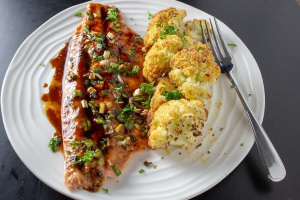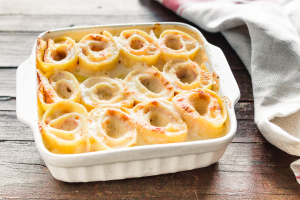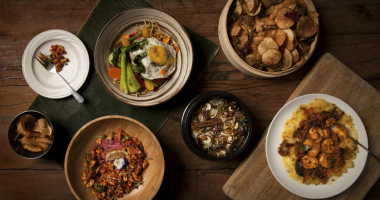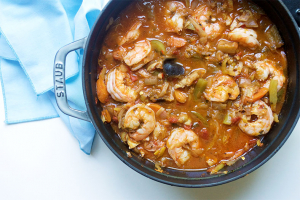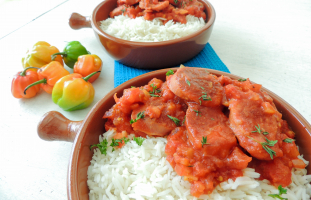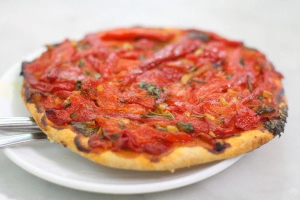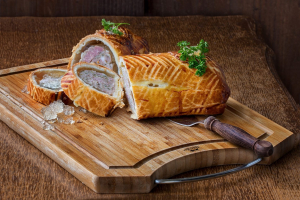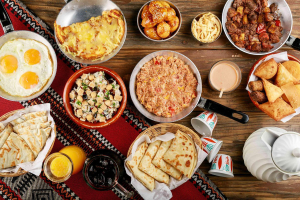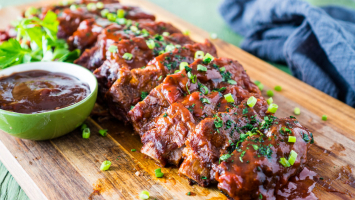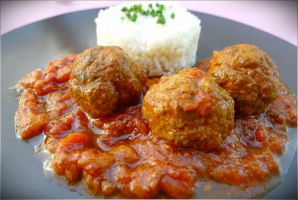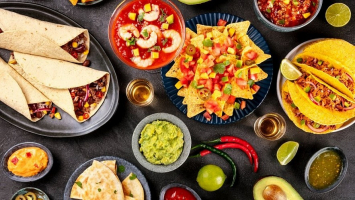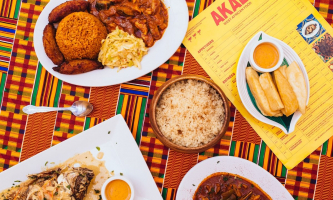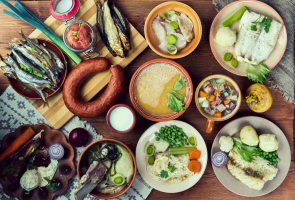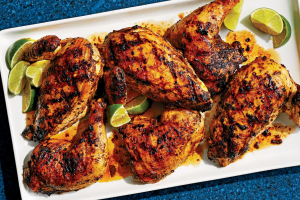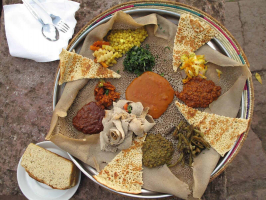Top 10 Best Foods in Greece
While Greece is famed for its intriguing history, enchanting islands, and spectacular weather, it is also regarded for having some of the world's best food! ... read more...Greek food has been inspired by Middle Eastern, Italian, and Ottoman cultures, with age-old recipes. Fresh vegetables, fish, olive oil, wine, meat, and grains, as well as cheese, bread, olives, herbs, and yogurt, play an important role in these dishes. Today Toplist would like to recommend to you 10 best foods in Greece. Hope that you can choose the dish that suits your taste.
-
Taramasalata is a tasty fish roe-based dip made with salted and cured cod, carp, grey mullet, and bottarga roe. It's a silky smooth dip made with olive oil and lemon juice and served with a starch foundation (either bread or potatoes).
Taramasalata is a traditional Greek dish given on Shrove Monday, also known as "Clean" Monday, the first day of the Easter lent. It's known as "Clean Monday" since it's the day when Greek Orthodox Christians cleansed their bodies and minds in preparation for the 40-day Easter lent.
Store-bought taramasalata pales in comparison to recipe for homemade taramasalata. Taramasalata that is mass-produced is frequently of poor quality and has a bright pink hue due to the use of food coloring as well as a slew of superfluous thickeners and preservatives.
Fresh Taramasalata is simple to create at home because the tarama and bread mixture is emulsified with olive oil, which gives it a natural thickness, smoothness, and delicious flavor. The color of roe can range from light beige to pale pink, depending on the type of roe used.
All you'll need to make your own taramasalata is:- White fish roe
- White bread
- Olive oil
- Lemons
- Red onion
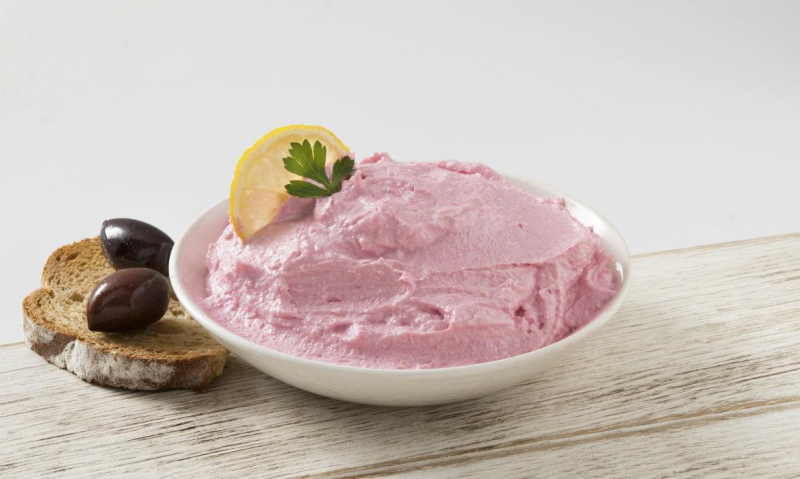
Taramasalata (thedailymeal) 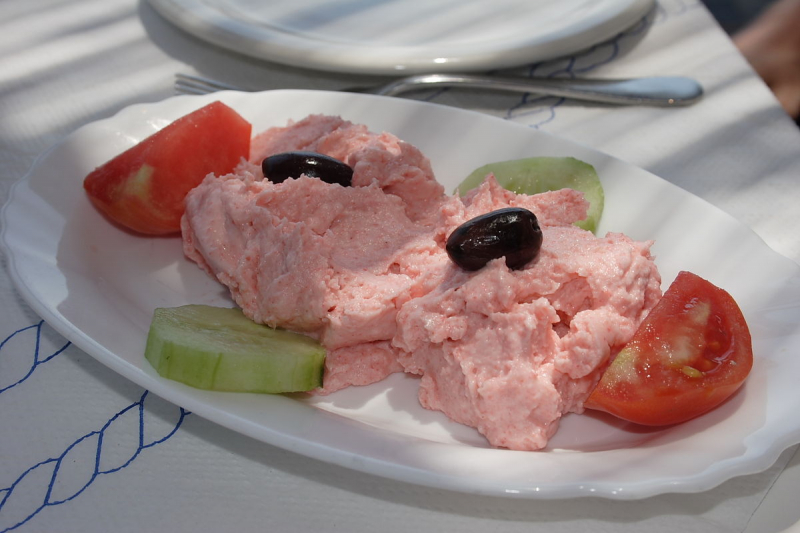
Taramasalata (wikipedia) -
Without Greek olive oil, there would be no Greek cuisine. The country is the third-largest producer of olive oil in the world, but first in extra-virgin oil production and consumption, with more than 20 liters per person per year. The little "Coroneiki" olive is the most common Greek oil olive. The Peloponnese, Crete, and Lesvos produce the most acclaimed Greek olive oils. There are 15 PDO (Protected Designation of Origin) olive oils in Greece, and another 11 PGI (Protected Geographic Indication) olive oils, all of which attest to the product's superiority.
Greeks have been farming olive trees for millennia; legend has it that Athena granted the city of Athens an olive tree in exchange for its favor. Local olives, some cured in a hearty sea salt brine, others, like wrinkly troubles, eaten uncured from the tree, are served with Greek meals. Similarly, olive oil, Greece's elixir, is freely used in cooking and salads, as well as drizzled over most dips and foods. A lot of taverns make their own oil.
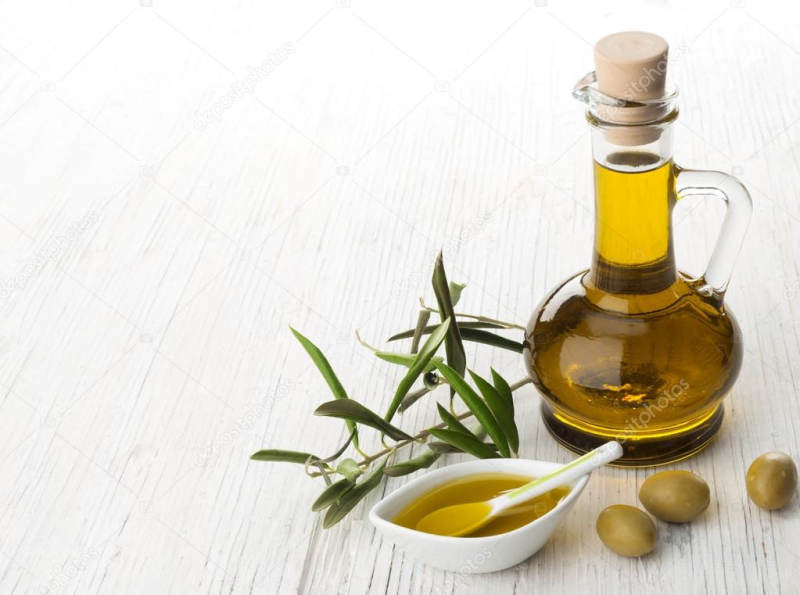
Olives and olive oil (depositphotos) 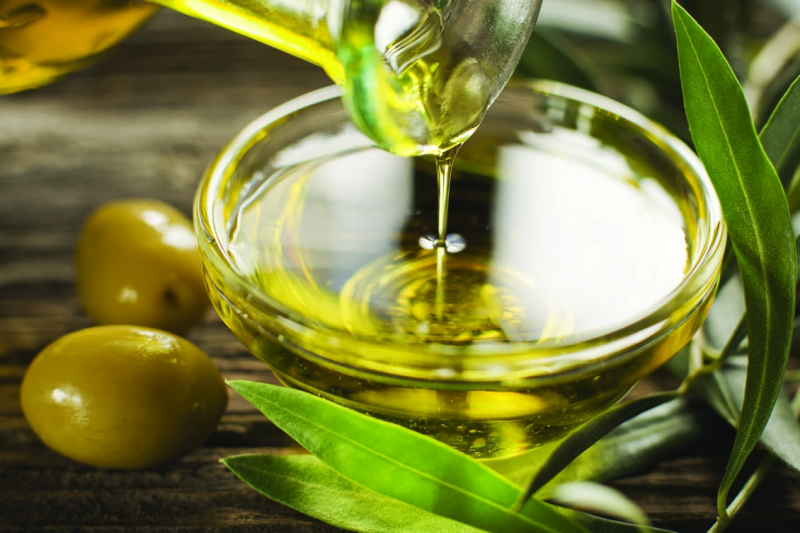
Olives and olive oil (hellenic-crops) -
Dolmadakia - stuffed grape leaves are one of the most iconic Greek foods. With lots of dill, mint, scallions, and tender rice, they are a delicacy not to be missed. Dolmadakia translates to "little dolmades."
Various components such as onion, parsley, mint, dill, and rice are stuffed into grape or cabbage leaves. Although minced meat is used, vegan variants are more prevalent. They can be served hot or cold, with or without a dip or sauce, depending on the contents. Dolmadakia gialantzi, a vegetarian variation with rice, sliced onions, and herbs which means "false dolmadakia" in Turkish.
Dolmadakia is boiled until the leaves are exceedingly soft and fashioned like small cigars. They're drizzled with olive oil and served with lemon wedges, like with many Greek foods.
Ingredients:
- Grape leaves, fresh or jarred
- Extra virgin olive oil
- Scallions (you can substitute with an onion)
- Tomato
- Fennel
- Carolina rice
- Fresh mint
- Fresh dill
- Broth (optional)
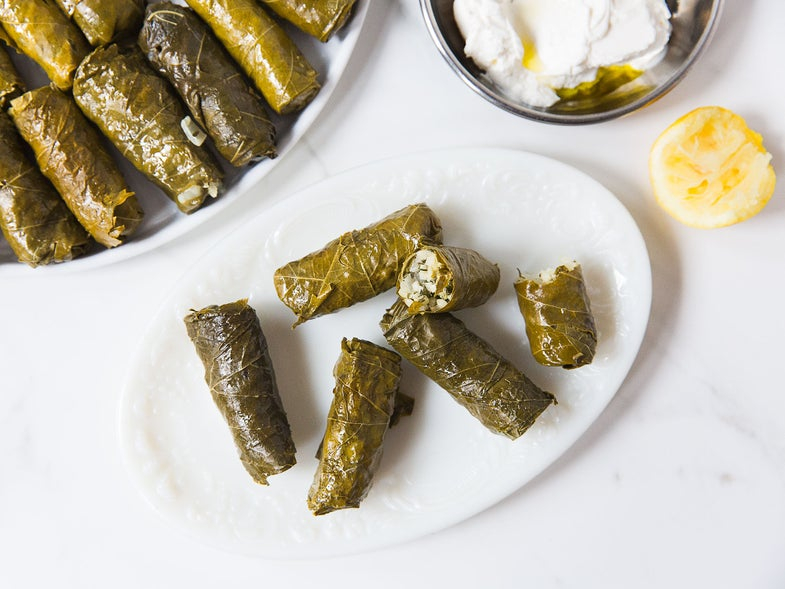
Dolmadakia (vanhoagiaoduc) 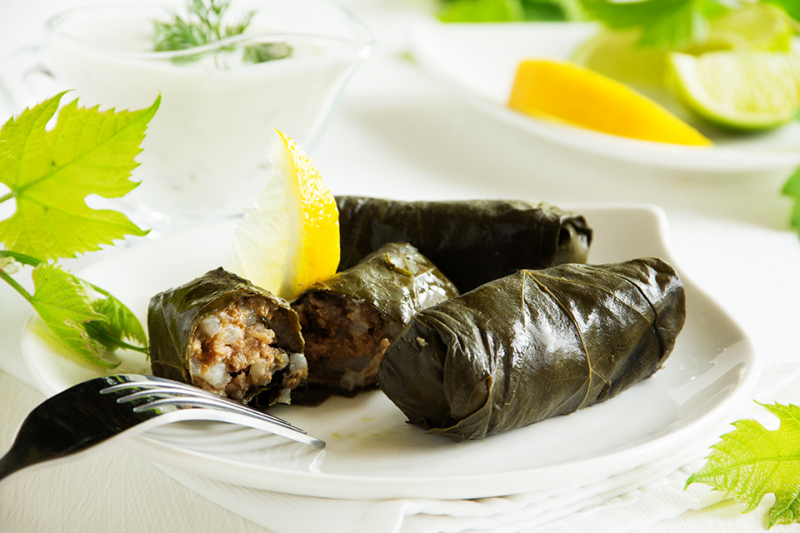
Dolmadakia (wpg) -
One of the most well-known Greek dishes is Moussaka. It's a Greek national dish created with layers of minced meat (usually lamb) and eggplant and a béchamel sauce on top.
Modern Greek Moussaka is made up of three layers, each of which is cooked separately before being stacked and baked together. Sliced eggplant forms the bottom layer, ground lamb forms the middle layer, and béchamel sauce forms the top layer. The layers are put together in a pan and cooked until the top layer is golden brown.
Ingredients
- eggplants
- potatoes (optional)
- vegetable oil (for frying the eggplants)
- beef or lamb mince (26 oz)
- red onions (chopped)
- cloves of garlic (chopped)
- tin chopped tomatoes (400g / 14oz)
- tomato paste
- sugar
- red wine
- sea salt and black pepper
- bay leaf
- cinnamon stick
- olive oil
- milk
- butter
- flour
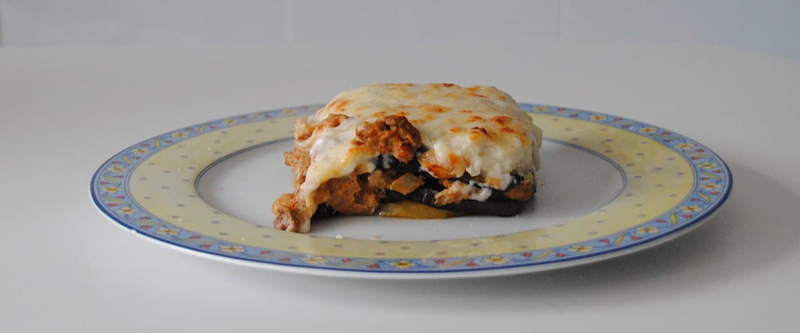
Moussaka (lasrecetascocina) 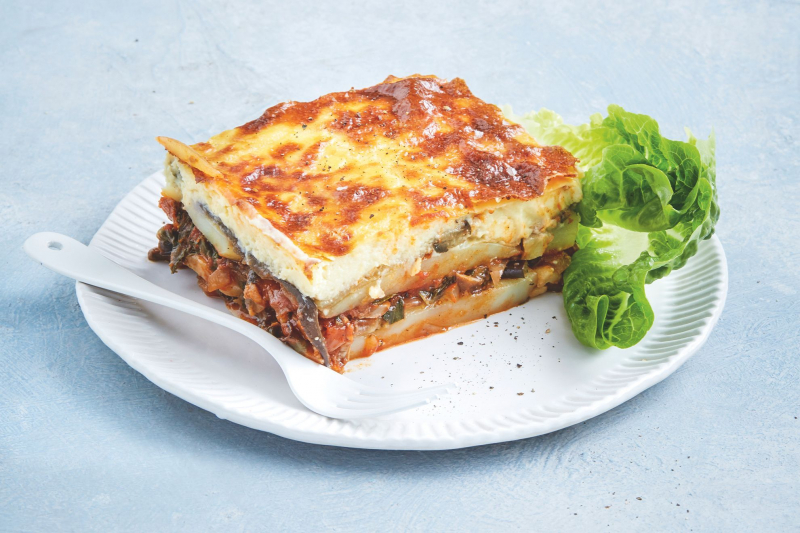
Moussaka (taste) -
Souvlakia is popular fast food in Greece. It can be cooked with any combination of meats and vegetables, with pig being the most popular meat in Greece and Cyprus, while chicken and lamb are also popular. Souvlaki has been documented in Greece since antiquity, and Homer even mentions it. It's frequently eaten while it's still hot, just off the skewer. It's usually served with lemon, sauces, veggies such sliced tomato and onion, and fried potatoes on the side, with or within a wrapped pita.
Grilled Lamb Skewers Recipe Ingredients:
- Leg of lamb, without the bone
- Olive oil
- Juice of lemon
- Oregano
- Salt and pepper
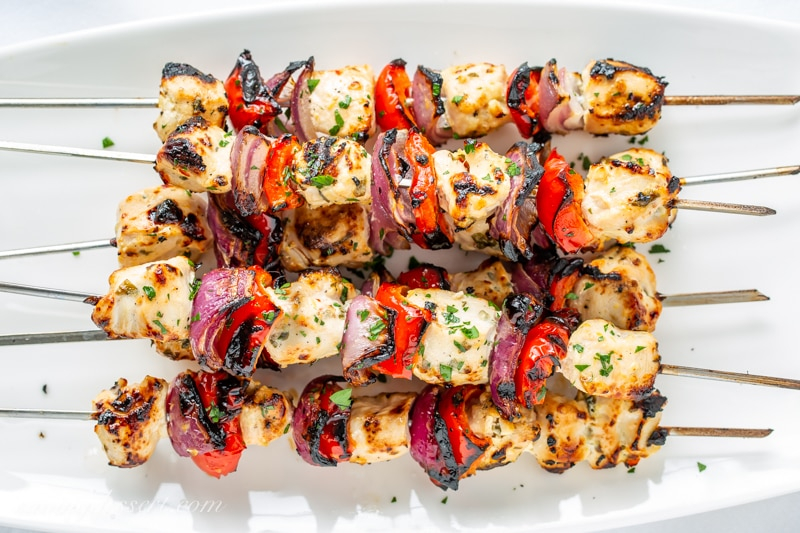
Souvlaki (pinterest) 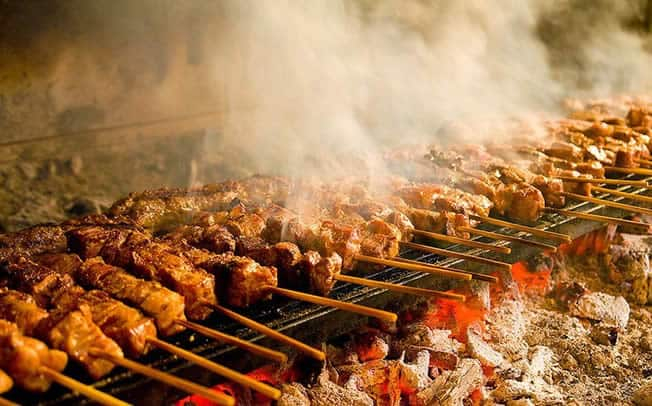
Souvlaki (greekcitytimes) -
In Greece, there is a full fish-eating ritual. To begin, inquire as to what kind of fish they have today. Once the waiter has informed you, you must proceed to the kitchen to inspect the fish and select the one you desire, after which they will weigh it for you, and you must specify how it will be prepared. All of these stages necessitate some familiarity with the appearance of a Fresh Fish, or even a complete fish. Because many of us are accustomed to eating fish fillets or even fish sticks, the sight of a complete fish on the table may come as a surprise to some, but in Greece it is not only common, it is a way of knowing where the fish you are eating is coming from.
Although there are fish in every season, this does not guarantee that you will be able to discover them. In general, choosing species that do not swim to great depths is a good idea. Anchovies, sardines, mackerel, bogue (a type of sea bream), and pike are also good alternatives. These fish may be common, but they're not as pricey, plus they'll be fresh and Greek, and, most importantly, they'll be higher in beneficial fatty acids.
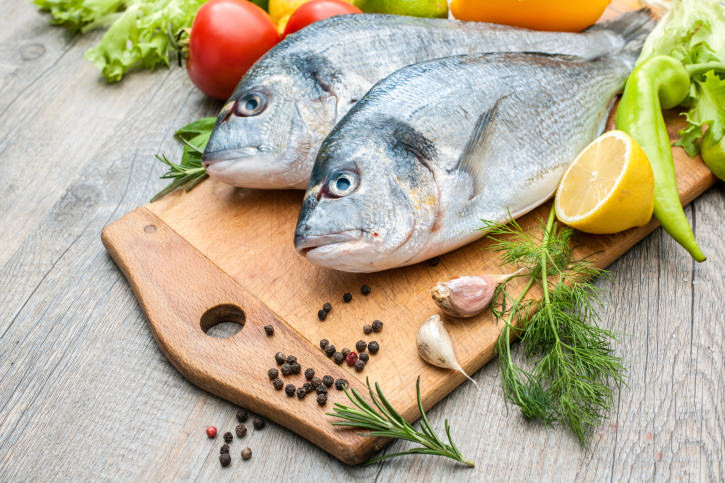
Fresh Fish (greekboston) 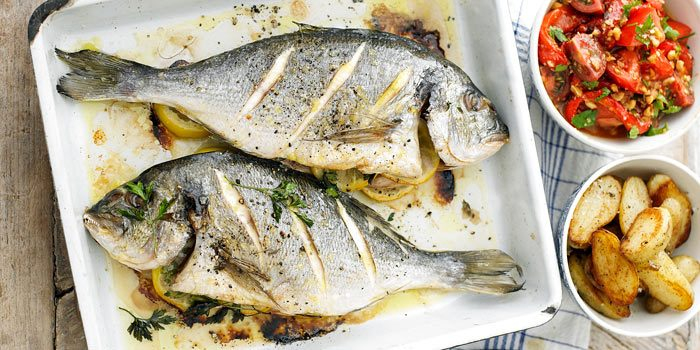
Fresh Fish (bbcgoodfood) -
These Kolokythokeftedes, along with fried eggplants, French fries, tzatziki, and Horiatiki Greek salad, are popular summer appetizers in Greece. If served with salad and tzatziki, these patties can also be served as a main course (and lots of fresh crusty bread). Despite the popularity of gyros and moussaka in other parts of the world, Greek cuisine features a large number of vegetarian dishes.
As a result, this is one of the summer vegetarian "treats" that everyone appreciates. Those Kolokythokeftedes are a favorite at family get-togethers and garden parties, and they're also one of the most popular meals at taverns and restaurants. The flavor combination of dill, parsley, and mint with feta, zucchini, and eggs (particularly free-range eggs) is simply exquisite!
The best part about Kolokythokeftedes is how easy it is to make! Simply shred the zucchini, drain the fluids, then combine the remaining ingredients to make patties. Then it's only a matter of frying them. It takes approximately 15-20 minutes to fry all of them, and the results are fantastic!
Ingredients
- zucchini, grated and squeezed
- feta, crumbled
- clove garlic
- green onions
- handful herbs (such as mint, dill and parsley)
- egg
- salt and pepper
- flour
- breadcrumbs
- oil
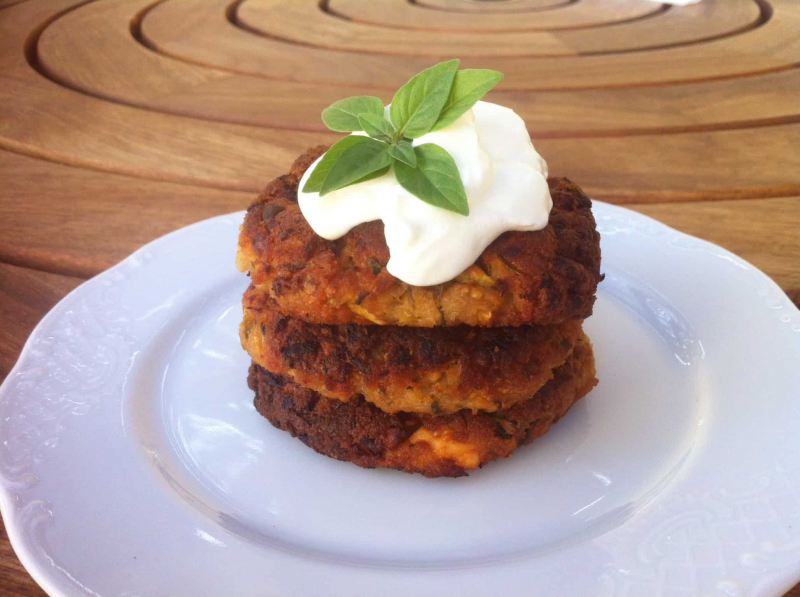
Kolokythokeftedes (mygreekdish) 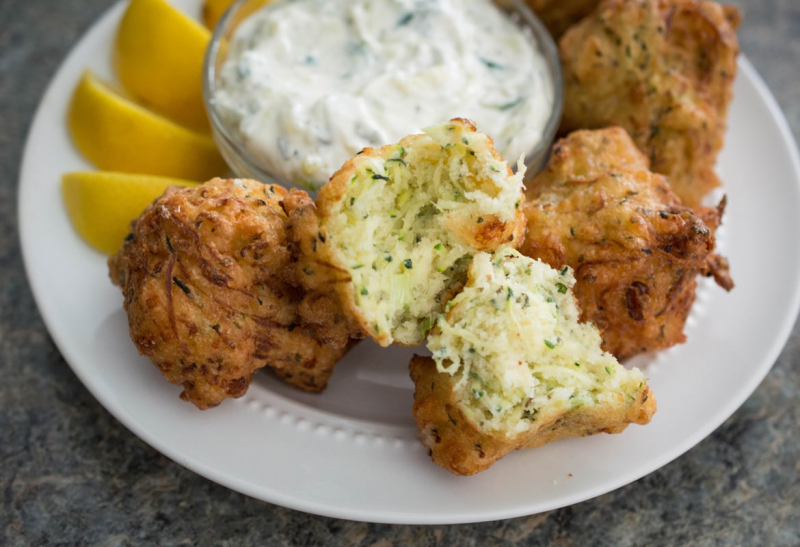
Kolokythokeftedes (foodlove) -
In Greece, only seafood that is freshly caught is being used. The waters around Greece are abundant, which means that fresh fish and other seafood may be found on a daily basis. The seas around Greece are also teeming with octopus. They are collected and processed in a certain way to make them exceptionally sensitive. It all starts with a freshly caught or hunted octopus, though. Fresh octopus seem to swim close to the shore, which means that they are relatively easy to catch. Many Greeks use spears to pierce their bodies, and they tend to hunt for them at night.
After the octopus has been adequately tenderized, it can be utilized in your favorite dish. Grilling and braising are two popular ways to prepare it. Octopus is rarely fried, and Greeks prefer it when it has been thoroughly tenderized and then simply prepared to bring out its inherent characteristics. Here are some common techniques for enhancing the octopus' natural flavors:
- Octopus With Ouzo
- Wine Braised Octopus
- Octopus Salad (Oktopodi Salata)
- Grilled Octopus
- Octopus With Garlic Sauce
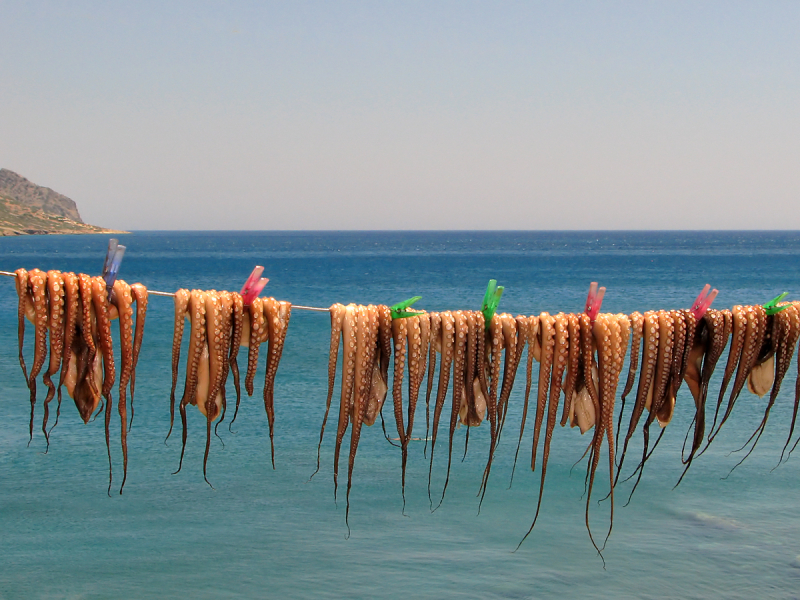
Octopus (wikimediacommons) 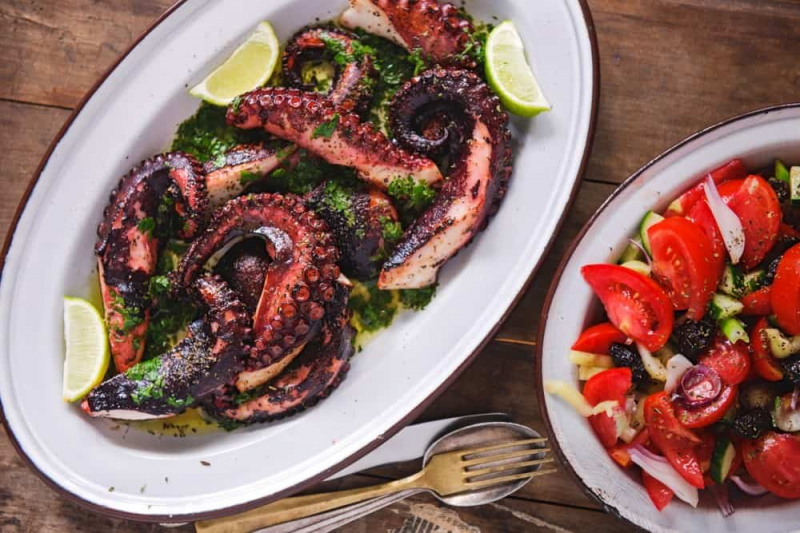
Octopus (mygreekdish) -
Synonymous with Greece, Feta has become a staple in culinary cultures across the globe - both cooked and fresh. The flavors are mostly instilled from their foraging, giving in a texture and taste that differs depending on the locale. Feta's popularity has spawned several variations from other culinary cultures over the years, resulting in unique and delicious twists.
Taken together, these fresh cheeses, sometimes known as white cheeses, have salty and acidic flavors with crumbly, slightly creamy textures. Because they are preserved in brine, they have a distinct taste and aridity, akin to that of a dry wine. Some white cheeses are manufactured entirely of cow's milk, giving them a creamier taste and a springier texture.
Feta, which is still made in its homeland, takes its flavor from the regions surrounding central Greece. Other white cheese varieties, too, receive their flavor from local foods and environment. Each pasture has its own flavor and texture characteristics, making it unique to its location and country.
While white cheeses do not melt as well as other cheeses (such as Mozzarella or Gruyère), when baked, their flavors are substantially improved and softened. Pair any white cheese with fresh fruit and vegetables such as tomatoes, grapes and red bell pepper, adding rich drizzles of olive oil to garnish.
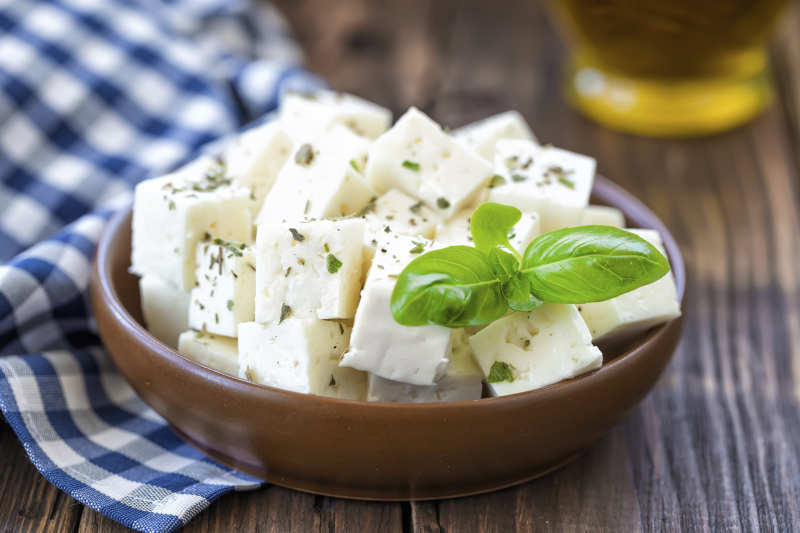
Feta cheeses (mercurynews) 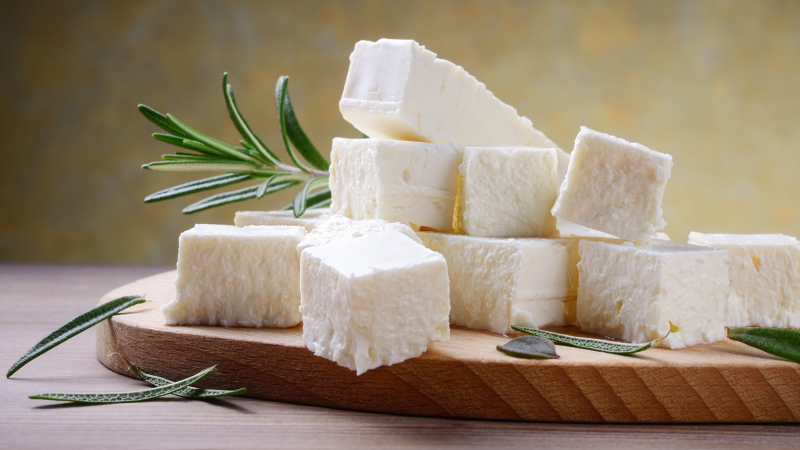
Feta cheeses (mashed) -
Baklava is a typical Greek treat comprised of layers of crispy golden brown phyllo, filled with chopped walnuts, and topped with honey syrup. It's pure bliss!
There are numerous theories concerning the origins and history of Baklava. Its origin is still a source of contention between Greeks and Turks, and it is claimed by both countries. Many historians believe it originated in Ancient Greece, where the 'gastrin' was created. Gastrin was a dessert that was quite similar to today's baklava. Filo bread, walnuts, and honey syrup are the three major ingredients in the traditional Greek baklava recipe. Baklava is a syrupy delicacy known as 'Siropiasta' in Greek. Syropiasta (syrupy desserts) are particularly popular in Greek cuisine, and for good reason!
Walnuts are the most common nuts used in traditional Greek Baklava recipes. The difference between the Turkish and Greek versions is the nuts used in the filling, with the Turkish version using pistachios. The key to making the most flavorful Baklava is to butter the phyllo sheets with top quality fresh butter. The genuine Greek Baklava recipe calls for 'galaktos' butter, which is created from a blend of sheep's and goat's milk, but if you can't stand the strong flavor, use good quality fresh cow's milk butter instead.
Ingredients:
- phyllo dough
- walnuts
- cinnamon powder
- grounded clove
- butter
- sugar
- water
- honey
- lemon or orange
- cinnamon stick
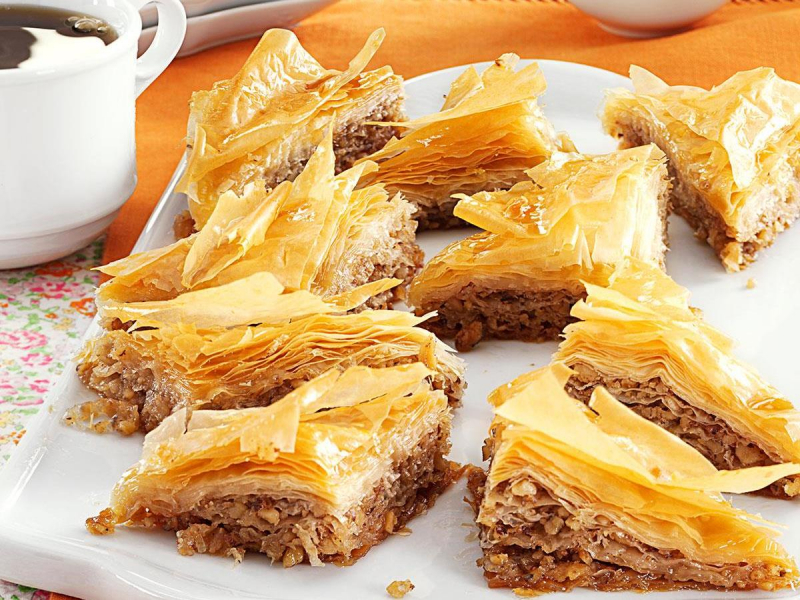
Baklava (twitter) 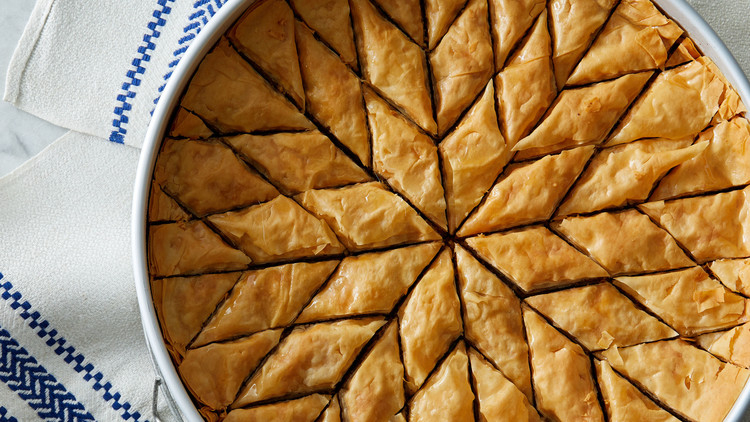
Baklava (marthastewart)














